Sigma A 30 mm f/1.4 DC HSM
3. Build quality
In the photo below the new Sigma is positioned next to the older model and the Canon EF 50 mm f/1.4 USM. As you can notice the new device is a bit higher but also a tad narrower than its predecessor.
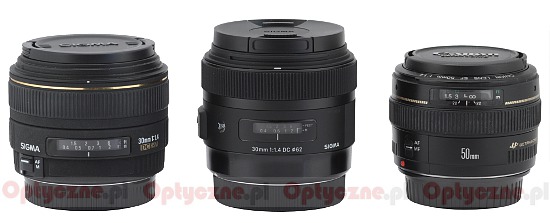 |
Please Support UsIf you enjoy our reviews and articles, and you want us to continue our work please, support our website by donating through PayPal. The funds are going to be used for paying our editorial team, renting servers, and equipping our testing studio; only that way we will be able to continue providing you interesting content for free. |
- - - - - - - - - - - - - - - - - - - - - - - - - - - - - - - - - - - - - - - - - - - - - - - -
The next photo shows you how much you can gain dimension-wise when you compare the tested instrument to a full frame 1.4/35 lens. The Sigma A 30 mm f/1.4 DC HSM, designed for smaller sensors, is noticeably shorter than the full frame Sigma A 35 mm f/1.4 DG HSM; it also weighs significantly less.
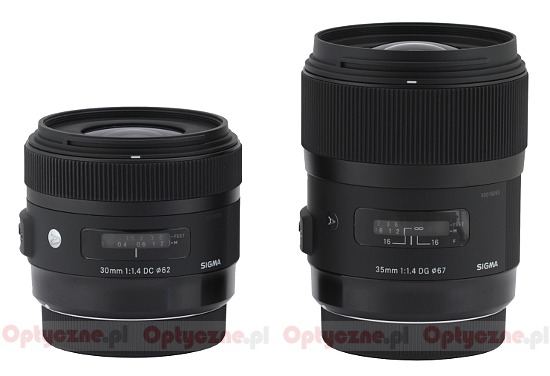 |
The tested lens starts with a metal mount which surrounds contacts and a rear element. That element is 31 mm in diameter and mobile. It is positioned almost on the same level as the mount if you set the focus at infinity; it hides about 0.5 of a centimeter inside when you pass to the minimum focusing distance. The area around the element is black and perfectly matted. You can’t see any gaps or electronic parts.
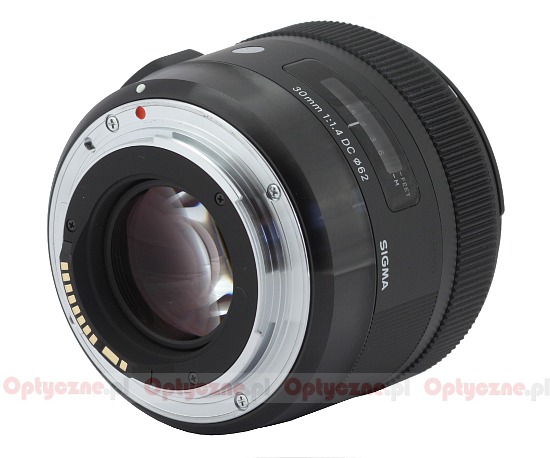 |
The proper body of the lens starts with a non-rotating, smooth metal ring on which there is a white dot, making the alignment with a body easier; then there is an inscription “MADE IN JAPAN” and a number indicating the production date. Further on you see a clear distance scale expressed in meters and feet which is behind a window. Under the scale there is an inscription with the name and the parameters of the lens – unfortunately there is no depth of field scale. On the left side of the window you can find an “A” symbol meaning the instrument belongs to the “Art” group of lenses; then there is a focusing mechanism mode switch (AF/MF).
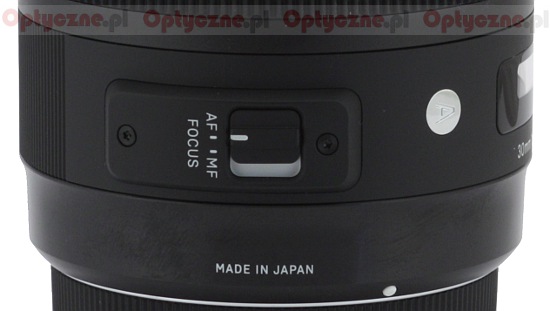 |
The next element is a manual focus ring. It is 20 mm wide and most of it is covered by rubber ribbing. The ring moves smoothly and is well damped across all its working range. Running through the whole distance scale takes a turn through 100 degrees. The ring can work in both MF and AF modes,.
Behind the manual focus ring there is a small fragment of the casing with a hood mount and the lens ends soon afterwards. The front element is immobile, with a diameter of 36 mm. It is surrounded by a non-rotating filter thread, 62 mm in diameter.
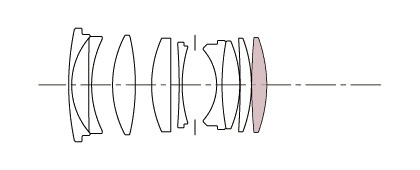 |
When it comes to the optical construction we deal here with 9 elements positioned in 8 groups. One element (the last one) is aspherical. What’s interesting, the number of low dispersion elements significantly decreased compared to its predecessor, which boasted of one SLD (Special Low Dispersion) and one ELD (Extraordinary Low Dispersion) element. Inside you can also find a circular aperture with nine blades which can be closed down to the value of f/16 at most.
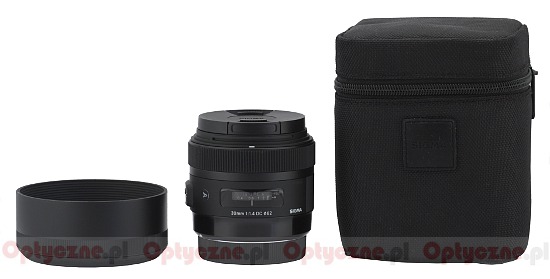 |
Sigma doesn’t usually stint on standard accessories, added in the box. Similarly in this case you get both caps, a hood and a solid, hard case. The lens comes with a 2-year guaranty period which can be prolonged by one more year – of course for a fee.






